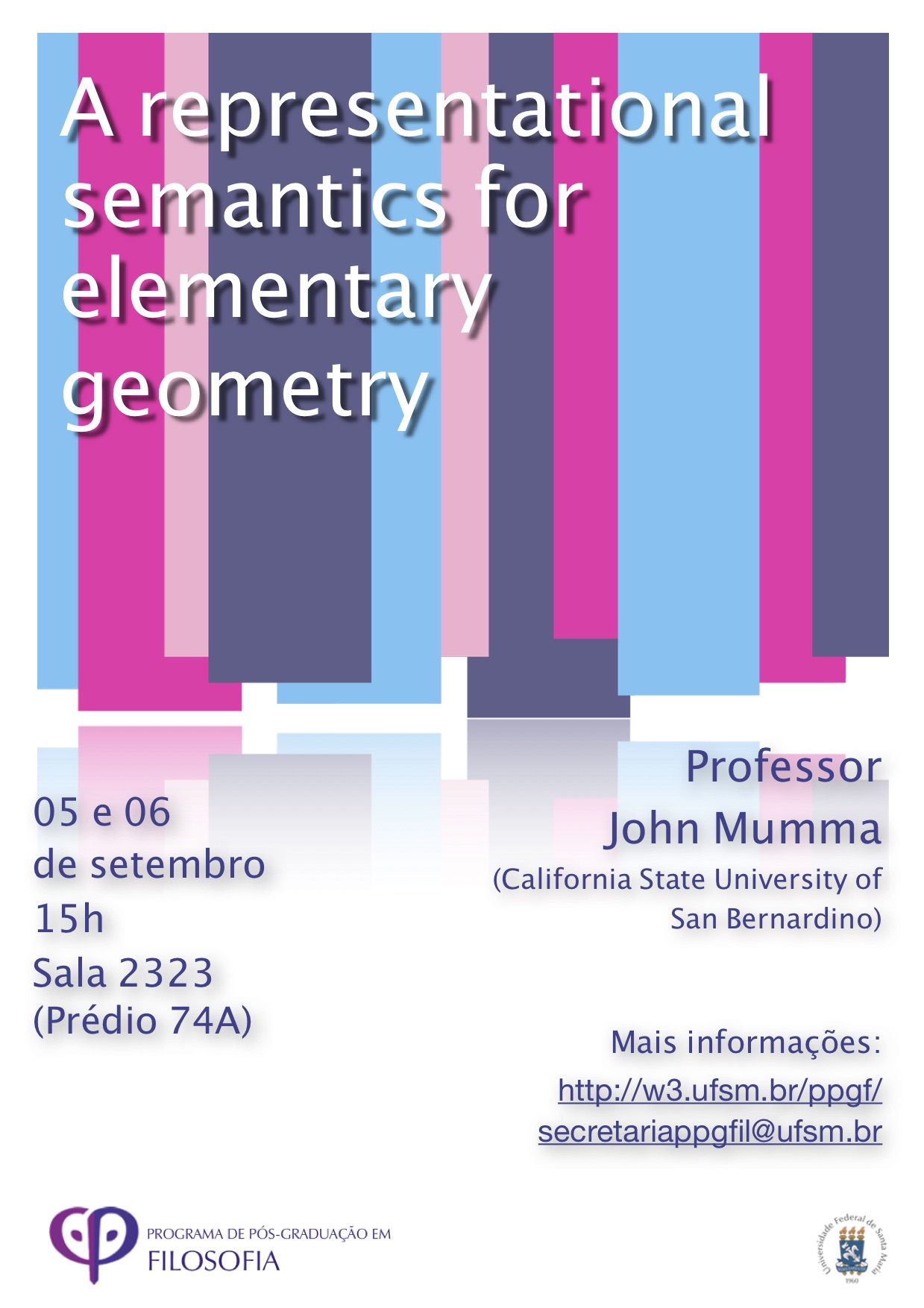A representational semantics for elementary geometry
Tarskian model theory provides a topic-neutral standard for determining whether the inference of a mathematical claim follows logically from others. Drawing on John Etchemendy’s The Concept of Logical Consequence, I discuss how the commonly accepted Tarskian standard applies to the proofs of elementary geometry and explore the prospects for an alternative, topic-specific approach to understanding the logical validity of the proofs.
The first talk will be devoted to explicating Etchemendy’s distinction between interpretational and representational semantics, and highlighting how the Tarskian standard presumes an interpretational semantics.
In the second talk, I will present an approach for providing a representational semantics for elementary geometry. I explain how the semantics is inspired by Ken Manders’ seminal analysis of Euclid’s diagrammatic proofs, provide the central formal ideas of the semantics, and discuss the issues that would need to be addressed to for the semantics to be fully worked out. I close by considering the prospects for a topic-specific representational semantics in other mathematical subjects.
List of references:
J. Avigad, E. Dean, and J. Mumma. ‘A Formal System for Euclid’s Elements’ The Review of Symbolic Logic, vol. 2, no. 4, Dec. 2009.
K. Manders ‘The Euclidean diagram.’ In Mancosu, P., editor. The Philosophy of Mathematical Practice. Oxford, UK: Oxford University Press, pp. 80–133, 2008.
J. Etchemendy, chapters 1 and 2 of The Concept of Logical Consequence, CSLI publications, 1999.
J. Etchemendy, ‘Reflections on Consequence,’ In Douglas Patterson (ed.), New Essays on Tarski and Philosophy. Oxford University Press. pp. 263–299, 2008.
A. Tarski ‘What is Elementary Geometry’ In Henkin, L., Suppes, P., and Tarski, A., editors. The Axiomatic Method: With Special Reference to Geometry and Physics (first edition). Amsterdam, the Netherlands: North-Holland, pp. 16–29.

